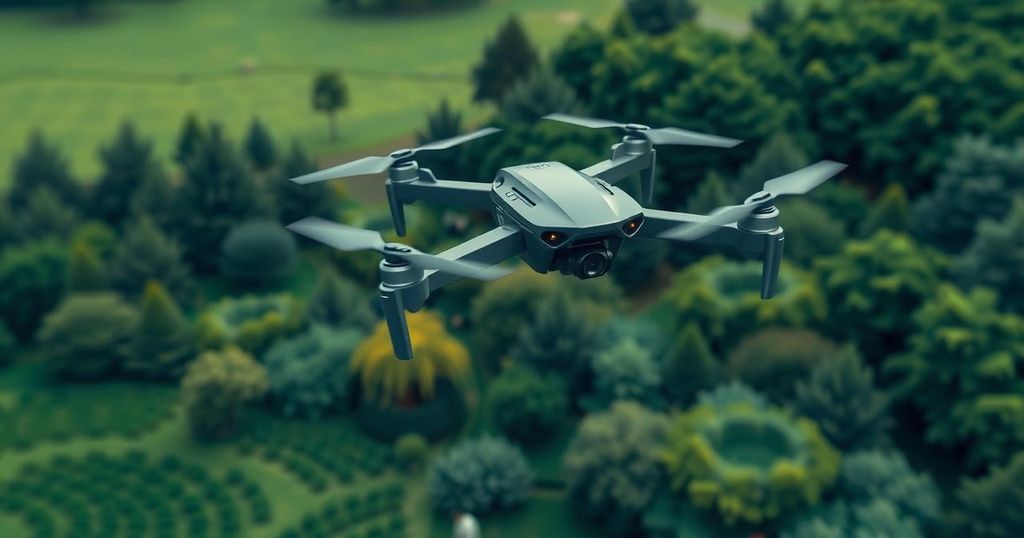Baykar has formed a joint venture with Italy’s Leonardo to tap into the European drone market, projected at $100 billion over the next decade. This collaboration involves drone assembly in Turkey and Italy, enabling streamlined certification processes. The first prototype will be a version of Baykar’s Akinci drone, with a significant payload capacity. The partnership aims to enhance drone technology and military applications while addressing Europe’s defense needs.
Baykar, the Turkish UAV leader, announced a strategic partnership with Italy’s Leonardo, aiming to penetrate the European drone market, projected to reach $100 billion within the next decade. This joint venture intends to assemble drones both in Turkey and at Leonardo’s Italian facilities, thus streamlining market certification processes in Europe. CEO Roberto Cingolani emphasized the critical role of drones in enhancing security amid currently complex geopolitical conditions.
The first prototype from this partnership is poised to be a version of Baykar’s Akinci drone, expected to be developed within a year, as Cingolani elaborated. Baykar Chairman Selçuk Bayraktar highlighted the drone’s substantial payload capacity, claiming it can carry munitions comparable to those of a fighter jet. This joint venture, according to Bayraktar, signifies a considerable commitment to deepening technological collaboration with Leonardo.
Moreover, there are discussions regarding the potential role of Baykar’s Kizilelma unmanned fighter as a ‘Loyal Wingman’ for the Global Combat Air Programme (GCAP) fighter developed by Leonardo and its partners. Cingolani expressed that engaging with Baykar presents an opportunity to explore incorporating their drone capabilities within the GCAP framework, although he cautioned that definitive requirements for drone integration remain unclear at this stage.
The partnership’s expansion to include assembly in Italy involves utilizing both Leonardo’s and possibly Piaggio Aerospace’s facilities, which Baykar acquired recently. The joint venture’s establishment is expected to finalize within six months, marked by a memorandum of understanding. Cingolani remarked on the collaborative spirit that drives the partnership forward, envisioning rapid advancements by consolidating technical expertise.
Key to Leonardo’s contribution will be enhancing drone sensors and software capabilities, as well as securing necessary certifications. Cingolani identified several areas for synergies, including the development of UAV swarms that navigate autonomously and the maturation of drones capable of escorting advanced sixth-generation fighters.
Cingolani assured that this joint endeavor would not conflict with ongoing Eurodrone initiatives, though he underscored Europe’s pressing need to address drone competitiveness, highlighting that time is an essential factor in this industry. Anticipated purchases by the Italian military may include various Baykar drone models, representing a strategic pivot away from reliance on American systems amid evolving international relations.
Cingolani addressed concerns about European export restrictions, proposing adherence to all regulations even if it results in challenges, especially regarding the joint venture’s operational capabilities. Italy’s prior commitment to U.S.-made drones may soon transition as European countries reevaluate their defense strategies in light of political and security dynamics.
The collaboration between Baykar and Leonardo represents a significant advancement in Europe’s drone capabilities, potentially reshaping the military UAV landscape. With plans for assembly in both Turkey and Italy, the joint venture aims to address a critical gap in European unmanned technologies. As Italy considers strategic shifts in its defense procurements, this partnership may facilitate greater autonomy and innovation in drone systems, crucial for bolstering European security. The venture reflects a broader sentiment of urgency within Europe to enhance defense spending and capabilities amidst evolving geopolitical challenges.
Original Source: www.defensenews.com






